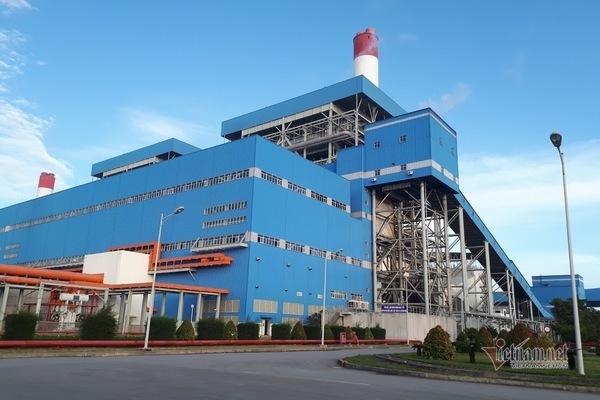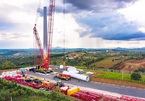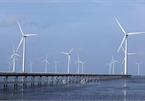
The Statement to the Government on approving the 2021-2030 national electricity development plan shows a significant decrease in the proportion of coal-fired power in electricity generation sources, a slowdown of renewable energy development, and an increase in gas-fired thermal power.
It’s expected that coal-fired power will have the capacity of 40,899MW by 2030, accounting for 28.4-31.4 percent, while gas-fired power may reach 27,471-32,271MW, accounting for 21.1-22.4 percent.
Meanwhile, coal-fired power projects will account for 15.4-19.4 percent of total electricity generation sources by 2045, while gas-fired thermopower, including LNG (Liquefied natural gas), will continue increasing, accounting for 23.5-26.9 percent.
As such, the draft national electricity development planning No VIII (eighth plan) has realized the strategy on reducing the proportion of dirty energy.
The Ministry of Industry and Trade (MOIT), which is drafting the plan, has been pursuing the principle of no new investment in coal-fired power projects. Only projects named in the seventh and revised seventh plans will continue developing.
Currently, coal-fired power still plays an important role in Vietnam’s electricity generation system.
Coal-fired power accounted for 30.8 percent of electricity generation capacity in 2020. The figure is expected to be 28.4-31.4 percent by 2030, the same as the average proportion in the world currently (29 percent) and South Korea (30 percent), and lower than many countries, including China and Indonesia (49 percent).
Despite the decrease in number of coal-fired power projects, it is increasingly difficult to arrange capital for them as many large financial institutions now say ‘no’ to coal-fired power.
The Energy Institute estimated that Vietnam would need VND5.7 quadrillion worth of capital, or $248 billion, for electricity generation projects in 2021-2045, including VND1.1 quadrillion in 2021-2025. Every year, Vietnam needs investments of about VND231 trillion, or $9.96 billion, on these projects.
The total investment capital needed in 2021-2030 is estimated at VND2 quadrillion dong, or VND200 trillion ($8.57 billion) a year.
Of this, coal-fired power would need VND358 trillion in 2021-2025 and VND425 trillion in 2026-2030. Meanwhile, wind power needs VND376 trillion in 2021-2025 and solar power only VND5.5 trillion.
Green financing
Ngo Duc Lam, former Deputy Head of the Energy Institute, predicts it will be difficult to mobilize capital for coal-fired power projects as many financial institutions are turning their back on coal-fired power projects.
Patrick Jakobsen from Danish EKF commented that financing coal-fired power projects has become taboo in the financial community.
Many countries, including China and the UK, have regulations restricting the arrangement of capital for coal-fired power. Some countries are planning to announce their green energy policies at the COP26 meeting.
Jacobsen recommends that Vietnam accelerate the development of renewable energy, such as offshore wind power. He said Vietnam would receive more financing if it followed this way.
Mark Hutchinson from Global Wind Energy Council (GWEC) thinks that domestic commercial banks would also be harsh in funding coal-fired projects.
Jakobsen said that lending interest rates applied to wind power projects vary depending on the risks of projects. However, the average interest rates are now 4-12 percent for coal-fired projects, and 2-5 percent for offshore wind power.
He said one of his projects in the UK can borrow money at an interest rate of 1.2 percent. However, a low interest rate is seen only in countries where the offshore wind power market has become stable. The interest rates in Vietnam could be 1.2 percent + 2-5 percent.
He said that with green financing becoming more common, offshore wind power projects are very attractive to financiers. They will have to compete with each other for the right to fund offshore wind power projects. Only 10 percent of financiers provide loans to coal-fired projects.
The lenders have to bear certain risks when funding coal-fired projects because it affects the implementation of green criteria that financial institutions have to satisfy.
Policymakers admit that they are facing terrible pressure from the international community to cut financing for coal-fired power and to accelerate renewable energy development.
Renewable energy could be the future of the world, but countries will have to find a solution to set up stable and safe electricity systems.
Investing in power storage technology is one of the solutions, though it is very costly.
Luong Bang

Wind and solar power: race to exploit endless resources
In the Draft Power Development Planning 8, one of the power source scenarios with the highest scores is the development of power sources associated with renewable energy under Resolution 55 of the Politburo.

Vietnam sees fastest rise in solar, wind power rate in national electricity structure in 2020: Research
According to the research, Vietnam's solar and wind electricity generation rose from 4.7 TWh in 2019 to 9.5 TWh in 2020. This equaled a 1.98 percentage point increase in the share of total electricity generation.